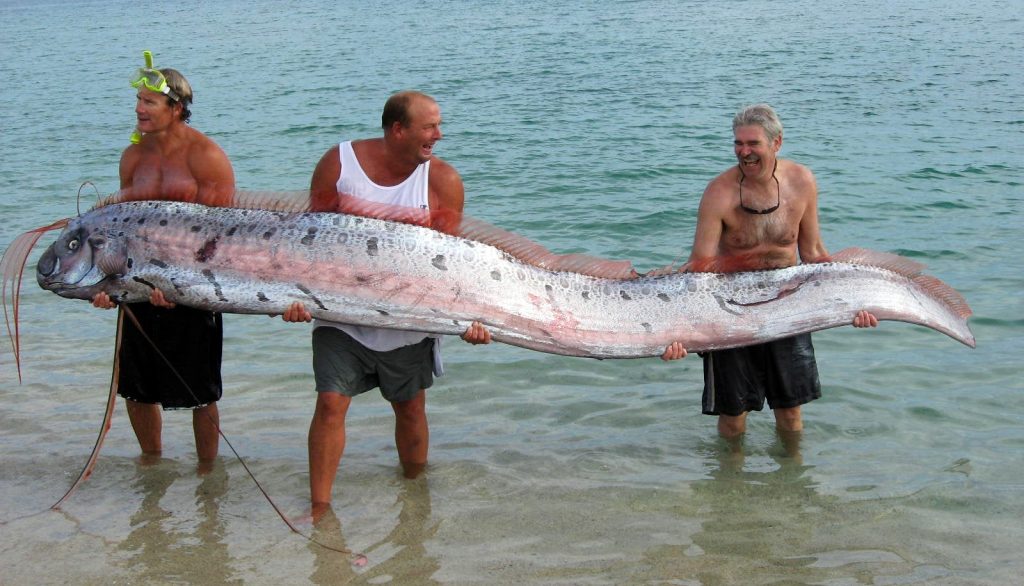 Image: Wikimedia Commons
Image: Wikimedia Commons
Little is known about this giant serpentine fish, which is shrouded in myth and legends. But one thing is clear, the oarfish is weirdly fascinating!
Silver in color with a prominent dorsal fin running the entire length of their body, these long eel-like fish are often called the “king of herrings” or “ribbonfish.” The oarfish may have also gotten its name from the way it propels itself through water.

Due to a few rare sightings, researchers have been able to piece together some facts about this odd creature.
Giant oarfish are the longest bony fish in the world.
While most are about 10 feet long, the largest recorded oarfish specimen was 36 feet long and weighed 600 pounds! There are reports of even larger oarfish measuring up to 56 feet, but they have never been confirmed.

They are rarely seen by humans.
Although these fish are spread across all oceans, they lurk beneath the ocean at depths of up to 3,300 feet and mostly surface when they are injured or dying. Some biologists believe they’re also susceptible to being washed up by strong currents, as they are poor swimmers and don’t have the muscle mass to navigate the choppy water.
Scientists have only spotted the oarfish underwater a few times, including recently in the Gulf of Mexico.

Image: NOAA Photo Library via Flickr
They taste really bad.
If you’re thinking that these large fish could feed a ton of people, think again! People have tried eating oarfish that have been captured by trawl nets, but the consensus is that they taste like goo. Oarfish have gelatinous bodies with smooth, scaleless skin.
They are completely harmless.
Though their massive size would intimidate anyone, oarfish aren’t considered dangerous to humans. Oarfish have tiny mouths with no teeth. Instead, they have rows of gill rakers, which they use to trap tiny plankton drifting through the ocean.

They may be able to self-amputate.
Yup! Tyson Roberts, a leading oarfish expert from the Smithsonian Tropical Research Institute has suggested that oarfish can selectively detach the tail end of their body in a process called autotomy. Apparently, all oarfish larger than 5 feet that have been observed by researchers have “shortened their bodies, often several times.”
Roberts believes the process has less to do with self-defense (since they likely have no predators) and could be more about making swimming more efficient, according to the New York Times.
It has an interesting way of swimming.
Oarfish have been observed floating with their bodies completely still, except for their fins which rapidly undulate to propel them through the water. They can also swim vertically, which may be the posture they adopt when feeding.

They may be the subject of ancient folklore.
Some biologists believe that oarfish may have been mistaken for “sea serpents” in the past. And Japanese legends also say that oarfish can predict earthquakes by washing up on shore before one happens, but researchers don’t believe that’s true — or other fish in their environments would react similarly.
For more on oarfish, watch the video below:




